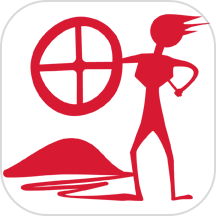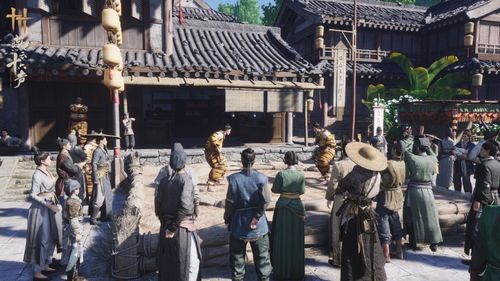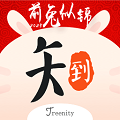英文中表示姿势的词汇
作者:佚名 来源:未知 时间:2025-02-21
在探讨姿势的英文表达时,我们不可避免地会涉及到日常生活、运动、艺术以及文化交流中各式各样的身体姿态。姿势,这一看似简单的概念,实则蕴含了丰富的语言与文化内涵,它不仅是身体语言的一部分,更是人类情感、习惯与社交互动的外在体现。以下,让我们通过一系列与“姿势”相关的英文词汇,深入探索这一多彩的主题。

The Language of Posture: Unveiling the Richness of Body Language
In the realm of human expression, posture serves as a silent yet powerful form of communication. It transcends verbal language, conveying emotions, attitudes, and even cultural norms through the delicate alignment of our bodies. From the casual slouch of a teenager to the poised stance of a ballerina, every posture tells a story, etched in the vocabulary of movement and form.

Everyday Postures: Mirrors of Our Moods
Imagine walking into a room and observing various postures: someone leaning back with arms crossed, another hunched over in concentration, and a third standing tall with a confident stride. These everyday postures, often expressed in English as 'slack', 'hunched', and 'erect' respectively, are more than just physical states. They are windows into our inner worlds, reflecting moods, self-esteem, and even our relationship with the space around us.

A 'slack' posture, for instance, might suggest disinterest, fatigue, or even defiance. It's a subtle way of saying, "I'm not fully engaged here." On the other hand, an 'erect' posture communicates confidence, respect, and a readiness to engage. It's the body language equivalent of a firm handshake or a direct gaze.
Hunched postures, commonly seen among students buried in textbooks or office workers glued to computer screens, speak of physical exhaustion and mental strain. They are reminders of the need for breaks, stretching, and a return to more balanced, healthy alignments.
The Art of Yoga: Poses as Meditations in Motion
Moving beyond everyday postures, we enter the realm of yoga, where poses, or 'asanas', are not just physical exercises but spiritual practices. Each asana, from the calming 'Child's Pose' (Balasana) to the challenging 'Headstand' (Sirsasana), has its own English name, encapsulating the essence of the pose and its intended benefits.
In Balasana, the body folds into a fetal-like position, inviting relaxation and inner peace. It's a pose that whispers, "You are safe, let go." Sirsasana, on the other hand, demands strength, balance, and focus, symbolizing the quest for higher consciousness and self-awareness.
Yoga poses, with their intricate names like 'Warrior I' (Virabhadrasana I) and 'Tree Pose' (Vrksasana), not only challenge our physical limits but also encourage us to explore our mental and emotional landscapes. They teach us about groundedness (as in Vrksasana, where one foot anchors the body while the other leg reaches skyward) and the courage to face challenges head-on (as in Virabhadrasana I, with arms raised and chest open).
Sports and Dance: The Dynamics of Movement
In the world of sports and dance, posture becomes a strategic tool, refined through years of practice and honed for peak performance. Athletes and dancers alike understand the importance of maintaining proper 'form' and 'alignment', terms that in English encapsulate the precision and efficiency of movement.
A runner's stride, for example, is a study in efficiency. The perfect blend of lean forward, arm swing, and foot strike creates a smooth, fluid motion that maximizes speed and minimizes energy expenditure. Similarly, a ballet dancer's 'port de bras' (carriage of the arms) is a delicate dance of elegance and strength, guiding the eye and enhancing the emotional impact of each move.
In both sports and dance, posture is not just about looks; it's about function. Proper alignment prevents injury, enhances performance, and allows athletes and dancers to express themselves with clarity and power.
Cultural Expressions: The Language of Gesture
Posture and gesture are deeply intertwined, especially in cultures where nonverbal communication plays a pivotal role. Consider the Italian gesture for "what you said is nonsense," a dismissive wave of the hand accompanied by a head tilt and a raised eyebrow. This posture, though difficult to translate directly into English, conveys a wealth of emotion and attitude in a single motion.
Similarly, in many Asian cultures, bowing is a traditional form of greeting and respect. The depth and duration of the bow can vary, communicating different levels of respect and humility. These cultural postures, though foreign to some, are rich with meaning and history, reflecting the values and norms of their respective societies.
Conclusion: Embracing the Diversity of Posture
In conclusion, the language of posture is a vast and intricate tapestry, woven from threads of everyday life, artistic expression, athletic endeavor, and cultural heritage. It is a form of communication that transcends spoken language, speaking to us through the silent eloquence of the body.
Whether we are slouching in comfort, standing tall in confidence, or folding into a yoga pose to find inner peace, our postures reveal who we are, how we feel, and what we value. They are a testament to the complexity and beauty of human expression, inviting us to explore, understand, and ultimately, embrace the diversity of posture in all its forms.
As we navigate the world around us, let us be mindful of our postures, recognizing them as powerful tools for communication, self-expression, and cultural understanding. For in the silent dance of posture, we find not just a reflection of ourselves but also a bridge to connecting with others, across languages, cultures, and the vast expanse of human experience.
- 上一篇: 东风猛士民用车型
- 下一篇: 好事多为何,恶事莫为何?
热门手游
换一换- 精品游戏
- 最热榜单
































